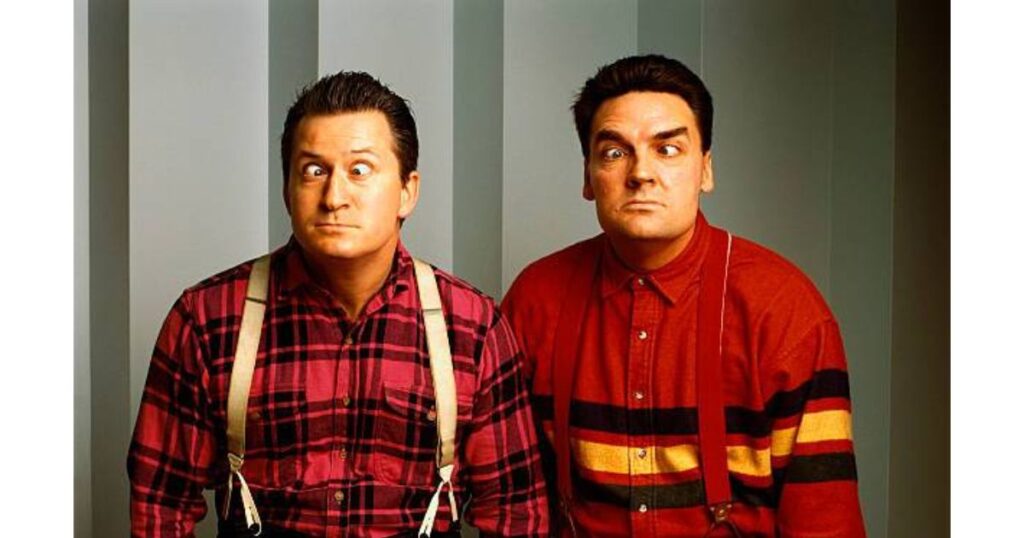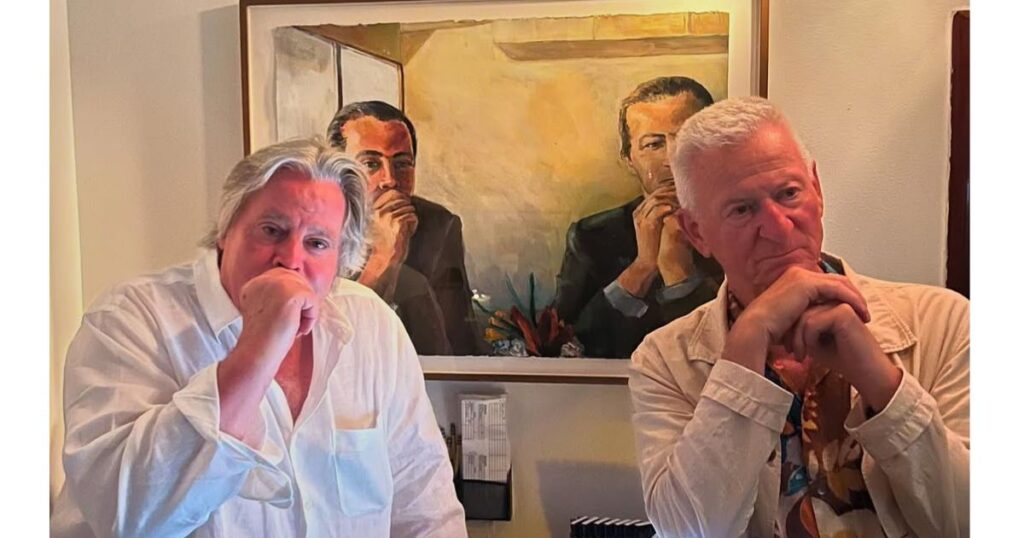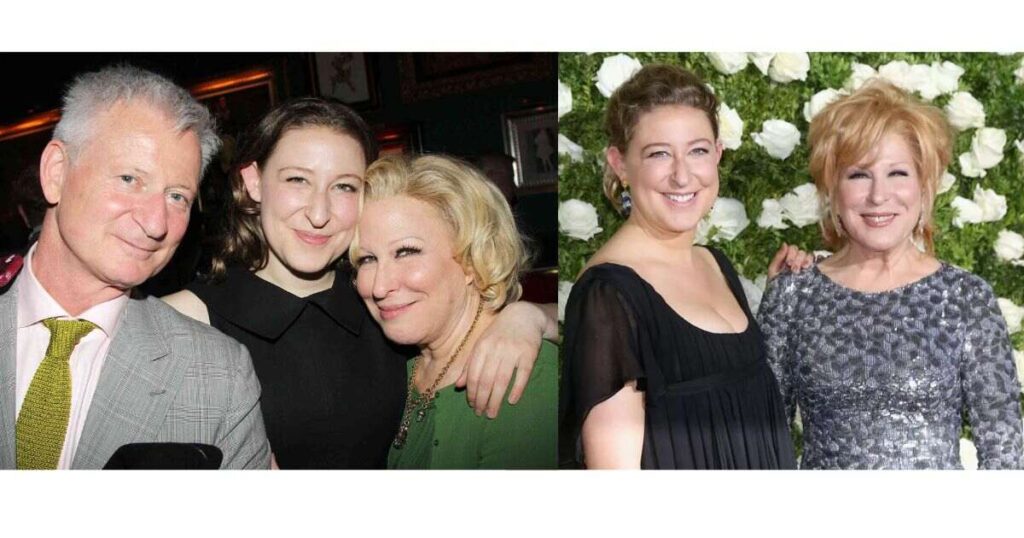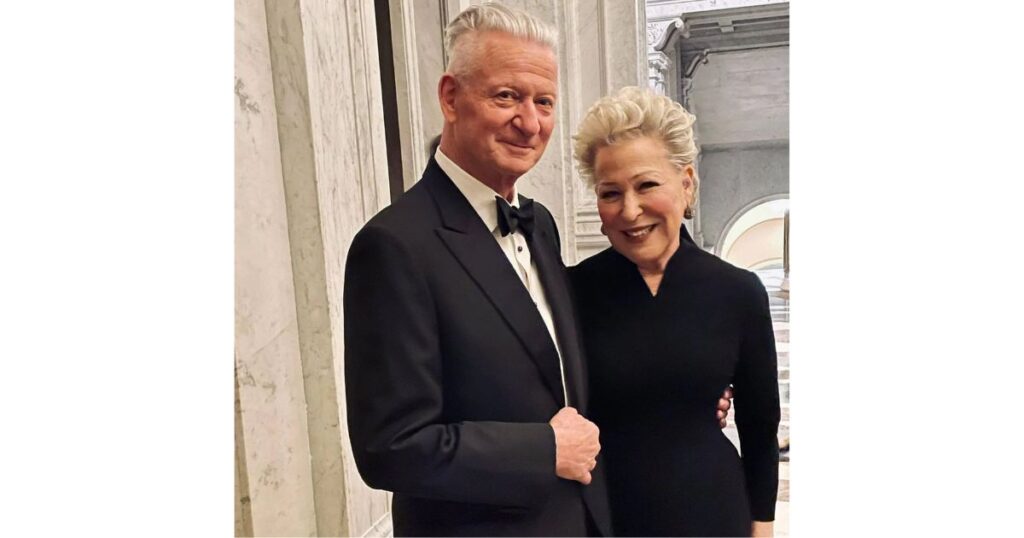Martin Rochus Sebastian von Haselberg is a performance artist, contemporary sculptor, and commodities trader who became known for his boundary-pushing work with The Kipper Kids. Born in Buenos Aires but raised across Europe, he built a career that blends avant-garde art with financial pragmatism. His marriage to entertainer Bette Midler since 1984 has lasted over four decades.
What sets von Haselberg apart is his refusal to fit one mold. He’s worked as a trader while creating shocking performance art, shifted from live shows to sculptural installations, and maintained a private family life despite his wife’s fame. His story shows how artists can sustain long careers by staying flexible and financially smart.
Martin von Haselberg Quick Bio Summary
| Attribute | Details |
| Full Name | Martin Rochus Sebastian von Haselberg |
| Date of Birth | January 20, 1949 |
| Age (2025) | 76 years old |
| Place of Birth | Buenos Aires, Argentina |
| Nationality / Heritage | German descent; raised in Europe |
| Height | 5’7″ (170 cm) |
| Professions | Performance artist, contemporary sculptor, commodities trader |
| Notable Work | The Kipper Kids (experimental performance duo) |
| Marriage | Bette Midler (m. 1984) |
| Children | Sophie von Haselberg (born 1986) |
| Art Highlights | “Floatulents” installation series, film appearances in Forbidden Zone and UHF |
| Net Worth | Estimated $250 million (from art + trading) |
| Public Profile | Low-profile artist; maintains privacy despite spouse’s fame |
Early Life and European Upbringing
Martin von Haselberg was born on January 20, 1949, in Buenos Aires, Argentina, to a family of German descent. According to IMDb, von Haselberg was the youngest of four boys who left Germany at age 12 to attend boarding school in England. His childhood split between Germany and England shaped his rebellious streak and artistic sensibility.
Von Haselberg described his education as classical, studying Greek and Latin in boarding schools. He admitted being “a terrible student” who got expelled from two schools for behavior teachers saw as disruptive. This early pattern of challenging authority would fuel his later work in experimental performance.
His Argentine birth is a biographical footnote; his formative years were distinctly European. The contrast between structured classical education and his natural resistance created tension that defined his artistic approach. By his teens, he already showed signs of someone who couldn’t stay inside conventional boundaries.
Drama School and the Birth of The Kipper Kids
Von Haselberg studied acting at East 15 Acting School in England, where he met fellow student Brian Routh. As documented on Wikipedia, von Haselberg and Brian Routh created a character called “Harry Kipper” and began performing together as an experimental duo. When school officials deemed their work “too experimental,” they left formal training and took their act on the road.
This decision to abandon traditional theater for fringe performance was risky but defining. The duo became The Kipper Kids (also known as “Harry and Harry Kipper”), a name that anchored von Haselberg’s public identity for the next decade. Their partnership combined formal dramatic training with punk-era chaos.
The Kipper Kids: Shocking Audiences Across Two Continents

In the late 1970s and early 1980s, Martin von Haselberg and Brian Routh performed as The Kipper Kids, presenting unpredictable shows that combined slapstick, props, food, fire, and eccentric costumes. Their performances challenged audiences rather than aiming to entertain conventionally, quickly establishing them in the experimental art scene across Europe and the United States.
The duo also appeared in film and TV, including Forbidden Zone (1982), UHF (1989), and an episode of Moonlighting (1989), bringing their avant-garde style to a wider audience. Their work stood out for its timing and originality, as performance art was moving beyond theaters into public spaces and media, yet they maintained their unique vision without catering to mainstream expectations.
Read Also: Kendrick Lamar Height, Age, Net Worth, Career and Biography
Shifting to Contemporary Art and Visual Installations
After the peak of The Kipper Kids era, von Haselberg transitioned into contemporary visual art and installations. His solo work includes a series titled “Floatulents”—large photographic images transformed into inflatable sculptural shapes. This work was presented at the New Orleans Museum of Art in 2009.
In a 1986 interview with the Los Angeles Times, von Haselberg described his philosophy: “Art should have a strong spiritual effect on people. By that, I meant that it should affect them as spiritual beings.” This perspective shows a shift from shock tactics to contemplative engagement. His artistic evolution moved from raw, confrontational performance to sculpture, photography, and installation work.
The transition wasn’t abandonment—it was expansion. Von Haselberg proved he could work across mediums, adapting his creative voice to new forms. This breadth kept his career alive beyond the shelf life of most performance art acts.
The Unlikely Dual Career: Art and Commodities Trading

One of the most surprising aspects of von Haselberg’s life is his work in commodities trading. He revealed: “I’ve been trading commodities since before I went to drama school and did the Kipper Kids.” He added that if he was just a trader, he’d be creatively frustrated, but if he was only an artist, he wouldn’t earn money.
This dual existence—artist and finance professional—reinforced a multi-dimensional identity. His career wasn’t linear; it was layered and pragmatic. The finance work gave him freedom rare among experimental artists.
He didn’t have to compromise his vision for commercial viability because trading provided income stability. This practical approach to sustaining a creative life offers a template other artists often overlook. Von Haselberg built financial security that protected his artistic independence.
Meeting Bette Midler and a Las Vegas Wedding
Von Haselberg met entertainer Bette Midler in the early 1980s, beginning a romance in 1981. People confirmed they married in Las Vegas on December 16, 1984, after a six-week courtship. An Elvis impersonator officiated the ceremony at the Starlight Chapel, and Midler admitted she was the one who proposed.
Reflecting on their fast-moving romance, von Haselberg said he made a conscious choice to work on their relationship from the start, even without knowing Midler well. It shows he approached their marriage with intention, not just impulse. His willingness to work at the relationship, despite barely knowing his partner, set the foundation for their longevity.
Their quick Las Vegas wedding became legendary for being both spontaneous and deliberate. It shows that lasting relationships don’t always follow a slow, careful path. Sometimes commitment is a conscious choice made early and reinforced daily.
Read Also: Maya Schauffele: Life, Family, Career, and Philanthropic Journey
Martin von Haselberg’s Fatherhood and Family Life

The couple’s daughter, Sophie von Haselberg, was born in 1986. Bette Midler has spoken publicly about von Haselberg’s parenting to People Magazine in a 2014 interview: “My husband is probably the greatest father who ever lived. He’s fantastic. He picked up the slack when I was on the road. He taught her a foreign language. He taught her to cook.” Sophie herself described him as “my cool dad.”
Von Haselberg took an active, hands-on role in raising Sophie while Midler toured and filmed. His background—multilingual, artistically trained, financially savvy—gave Sophie an unconventional education. The family dynamic reversed traditional celebrity household roles, with the father as primary caregiver during work periods.
This arrangement worked because von Haselberg’s career allowed flexibility that Midler’s schedule didn’t. His trading and art projects could shift around parenting needs. Their family structure shows how couples can navigate demanding careers without defaulting to nannies or distant parenting.
Marriage Secrets: Space, Respect, and Separate Bedrooms
Midler and von Haselberg’s marriage has lasted over 40 years, unusual in entertainment circles. Reports indicate they sleep in separate bedrooms because of his snoring. Midler noted the secret to their lasting marriage: “I think the secret is giving each other a lot of lead and a lot of room and not being in each other’s faces all the time.”
She also advised in a People Magazine interview: “Don’t diminish each other. Don’t make each other less. Don’t try to make each other wrong all the time. Don’t blame.” These reflections give insight into their mutual respect, autonomy, and unconventional approach. They’ve built a partnership on independence rather than constant togetherness.
The separate bedrooms detail isn’t marital trouble—it’s practical problem-solving. Many long-term couples find that physical space can preserve emotional closeness. Von Haselberg and Midler demonstrate that traditional marriage conventions aren’t requirements for lasting commitment.
Martin von Haselberg Physical Traits and Public Profile

Martin von Haselberg was born on January 20, 1949, making him 76 years old as of 2025. According to The Famous People his height as 5’7″ (170 cm), though height claims in online profiles are less reliably documented. He maintains a low public profile compared to his famous wife.
Von Haselberg rarely gives interviews or appears at public events. His preference for privacy contrasts sharply with Midler’s public-facing career. This imbalance—one partner famous, one private—requires boundaries both have clearly maintained.
Net Worth and Financial Standing
According to Celebrity Net Worth, Martin von Haselberg’s net worth at $250 million as of recent reports. This figure should be treated as approximate, as private wealth is difficult to verify publicly. His dual income streams—art sales and commodities trading—likely contributed to substantial financial stability over decades.
The net worth estimate is significantly high for a performance artist. It suggests his trading career was more lucrative than his art sales. Financial success gave him the luxury to create art without commercial pressure.
Cultural Heritage and Personal Identity
Von Haselberg is of German descent, despite his Argentine birthplace. His upbringing was largely European, with his parents’ identities and professions remaining undocumented in public records. Not much is known about his parents or specific early educational background beyond his boarding school years.
This privacy extends to his personal religious beliefs, which have never been publicly discussed. Von Haselberg has maintained clear boundaries around family history and private beliefs. He’s chosen to let his work speak louder than biographical details.
Martin von Haselberg Legacy
Martin von Haselberg’s career defies easy categorization. He moved from experimental performance to visual art, from trading floors to gallery installations, from public spectacle to private family life. His work with The Kipper Kids placed him in punk-adjacent counterculture history.
What makes his story instructive is the refusal to choose one identity. He didn’t abandon art for finance or vice versa. He built a layered life that sustained creativity, family, and financial security at once.
Von Haselberg proves that artists don’t have to starve or compromise. Strategic financial planning alongside creative work offers freedom most artists never achieve. His marriage longevity and involved fatherhood challenge stereotypes about artists being too self-absorbed for stable relationships.
Conclusion
Martin von Haselberg has built a life that balances creativity, practicality, and family. From his boundary-pushing performances with The Kipper Kids to contemporary visual art and commodities trading, he has shown that artists can sustain long careers without compromising their vision. His work demonstrates flexibility, experimentation, and thoughtful financial planning.
His 40-year marriage to Bette Midler and active role in raising their daughter highlight a practical approach to relationships and family life. Von Haselberg’s story is a reminder that success doesn’t always follow conventional paths—creative fulfillment, financial stability, and strong family ties can coexist.
FAQ’s about Martin von Haselberg
How old is Martin von Haselberg?
Born January 20, 1949, he is 76 years old as of 2025.
Who is Martin von Haselberg’s daughter?
Sophie von Haselberg, born in 1986, is an actress in film and television.
What were The Kipper Kids known for?
An anarchic performance art duo featuring shocking live shows with physical comedy, props, and fire during the 1970s and 1980s.
How long have Martin von Haselberg and Bette Midler been married?
They married December 16, 1984, making their marriage over 40 years as of 2025.
What is Martin von Haselberg’s net worth?
Estimates suggest approximately $250 million, though this figure is not independently verified.
What is Martin von Haselberg’s height?
Listed as 5’7″ (170 cm), though height claims are less reliably documented.
Did Martin von Haselberg work outside of art?
Yes, he worked as a commodities trader alongside his performance art and visual art career.

Hi there! I’m Austin Ruth, a blog editor and publisher on sports websites with 8+ years of experience covering the stars who make games great. At SportGalon, I share stories about the people behind the uniforms – from NFL quarterbacks to WWE superstars.
I dig deep to bring you the real scoop on ages, net worths, and family lives of your favorite athletes. Think of me as your sports-loving friend who knows all the cool facts!
Thanks for joining me at SportGalon. Let’s explore the world of sports personalities together!










